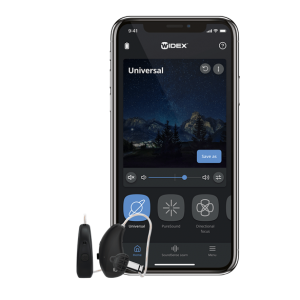Hearing is a remarkable gift, connecting us to the symphony of life around us. Yet, when the harmony of sounds is disrupted, as in the case of conductive hearing loss, our world can turn silent. This article dives into the depths of conductive hearing loss, shedding light on its causes, effects, and possible remedies.

Unveiling the Anatomy of the Ear

Imagine the ear as a gateway to auditory experiences, comprising three integral parts: the outer, middle, and inner ear. In the intricate symphony of hearing, each part plays a distinct role. However, when a hurdle emerges, as with conductive hearing loss, the melody becomes distorted.
The Four Primary Types of Hearing Loss
1. Sensorineural Hearing Loss
2. Conductive Hearing Loss
3. Combined or Mixed Hearing Loss
4. Auditory Neuropathy
The Enigma of Conductive Hearing Loss
Conductive hearing loss emerges when the path of sound encounters roadblocks within the outer or middle ear. Soft sounds retreat into obscurity, and even louder sounds can be muffled. This auditory puzzle often arises due to various underlying factors.
Seeking Solutions: Medicine and Surgery
The good news is that many cases of conductive hearing loss can be addressed through medical intervention or surgical procedures. This type of hearing loss isn’t an immovable barrier; it is a challenge that may be overcome.
Decoding the Causes
Conductive hearing loss finds its roots in diverse factors, encompassing:
Fluid Fluctuations: The Cold Connection
The fluctuations of fluid within the middle ear, triggered by colds or allergies, can impede the journey of sound waves, obscuring the auditory experience.
Otitis Media: The Intricate Ear Infection
Otitis media, or ear infection, emerges as a leading cause. When “otitis,” the term for ear infection, meets “media,” referring to the middle ear, the result is a disruption in the symphony of sound.
Eustachian Tube Troubles: Bridge to Balance
The Eustachian tube serves as a bridge between the middle ear and the nose, allowing for fluid drainage. If this vital passage falters, fluid might linger within the middle ear, distorting the harmonious reception of sound waves.
The Eardrum Dilemma: A Hole in Sound
A perforated eardrum poses yet another challenge. Like a tear in a canvas, it disrupts the delicate process of sound transmission, leading to the distortion of auditory sensations.
Benign Tumors
Benign tumors, although not malignant, can obstruct the outer or middle ear, disrupting the natural flow of sound and introducing an unwanted silence.
Cerumen Conundrums: Earwax Woes
Earwax, or cerumen, is a natural guardian of the ear canal. However, when it overstays its welcome, it can hinder the passage of sound, plunging the world into muted obscurity.
External Otitis: The Swimmer’s Ear Saga
External otitis, commonly known as swimmer’s ear, entails infection in the ear canal. This aquatic adversary can alter the auditory experience, transforming sounds into distorted echoes.
Foreign Intruders: Objects in the Ear
Inquisitive children and their adventurous explorations can lead to unexpected objects finding refuge in the outer ear. The repercussions include disrupted sound waves and a curious silence.
Structural Abnormalities
Sometimes, the root cause of conductive hearing loss lies in structural irregularities within the outer or middle ear. Whether it’s a missing outer ear or misaligned middle ear bones, these variations can mute the auditory experience.
The Path to Restoration
The journey to restoring auditory harmony begins with identifying the underlying cause. Once the obstacle is recognized, medical professionals can chart a course toward the restoration of sound.
The Sonic Conclusion
In the grand orchestration of life, sound weaves the fabric of our experiences. Conductive hearing loss introduces dissonance into this symphony, yet it is a challenge that can be met with determination and medical expertise.
Unlocking Understanding: FAQs
1. Can conductive hearing loss affect only one ear?
Yes, conductive hearing loss can indeed impact only one ear. It might be due to a localized issue or injury affecting that specific ear.
2. Is conductive hearing loss permanent?
In many cases, conductive hearing loss is not permanent. Depending on the underlying cause, medical intervention can often restore normal hearing.
3. How is a perforated eardrum treated?
A perforated eardrum can be treated through medical procedures, and in some cases, it can heal on its own over time.
4. Are there preventive measures for conductive hearing loss?
Some preventive measures include maintaining ear hygiene, avoiding inserting objects into the ear canal, and addressing ear infections promptly.
5. Can conductive hearing loss be present from birth?
Yes, structural abnormalities leading to conductive hearing loss can indeed be present from birth, affecting an individual’s auditory experiences from early on.
Embrace the Harmony of Sound
The world around us is alive with sounds that paint vivid pictures in our minds. Conductive hearing loss may present obstacles, but armed with knowledge and medical insights, we can overcome these hurdles and once again embrace the symphony of life’s auditory tapestry.
Interprofessional Approach in the Evaluation and Treatment
The evaluation and management of patients with SNHL require an interprofessional approach involving various healthcare professionals. Collaboration between otolaryngologists, audiologists, radiologists, hearing instrument specialists, and speech/language therapists is crucial for accurate diagnosis, comprehensive evaluation, and tailored treatment plans.
Otolaryngologists play a key role in diagnosing the underlying cause of SNHL through detailed patient history, physical examination, and interpretation of diagnostic tests. They may recommend further investigations or interventions based on the findings.




